Table of Contents
- What's an HTML Sitemap?
- What's an XML Sitemap?
- The Difference Between XML & HTML Sitemaps
- Should you use an HTML or XML Sitemap — or both?
What's an HTML Sitemap?
An HTML sitemap is a list of all pages on your website stored as a page or file on your site. It is usually organized into a list of page titles that are hyperlinked with the URL to the page itself. The list is also usually structured according to the website hierarchy, with child pages listed under parent pages. HTML stands for Hyper Text Markup Language, the standard coding language for document display in browsers.
Here, I have accessed the sitemap linked in the footer of Boohoo’s website:
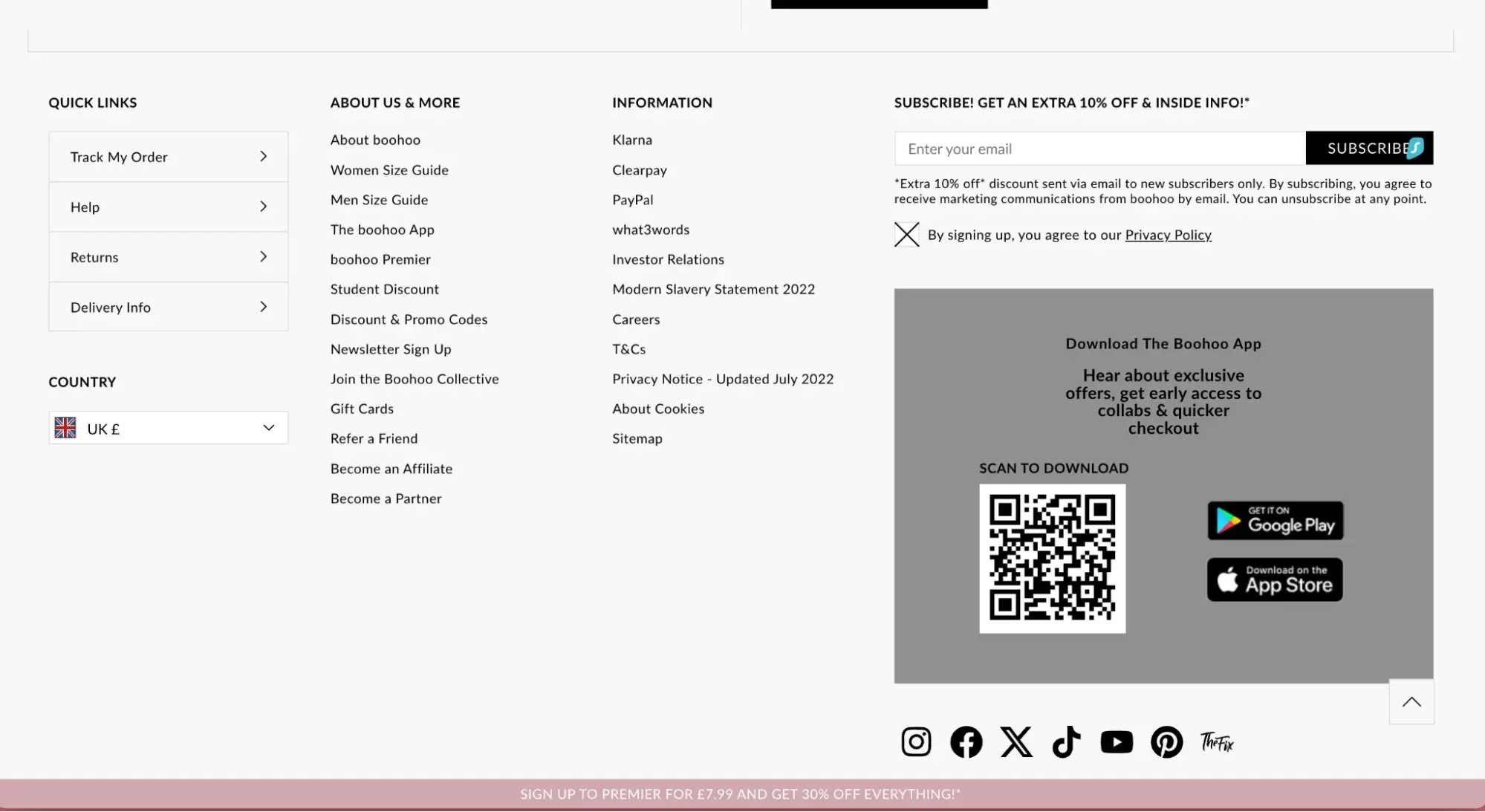
This is how the sitemap looks, with product categories and individual page links for users to find anything they need.
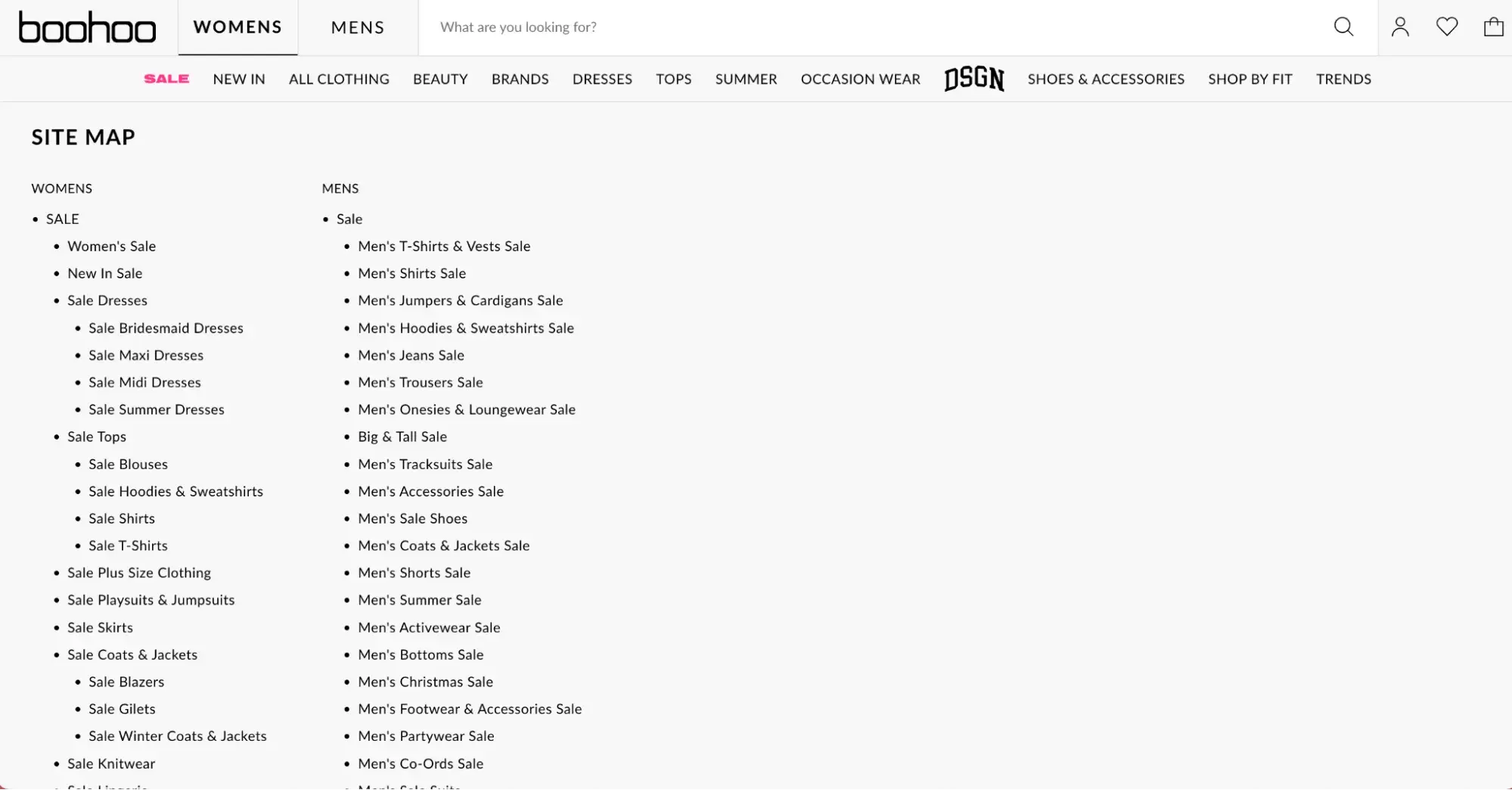
HTML sitemaps make it easy for users to find exactly what they’re looking for on your site. In this way, they improve the user experience by presenting all your content in an organized manner. I find them particularly useful for large websites when all pages can’t be included in the main navigation. If a website has one, I can usually find it by adding “sitemap.html” to the end of the homepage URL.
What's an XML Sitemap?
An XML sitemap is a file that stores the full architecture of your site content for search engines to crawl and index. It always includes pages and posts, but it can also include media, categories, and tags.
An XML sitemap is stored as a file on your site. It only includes pages that you want search engines like Google to find and index. The XML file gets found and crawled by search engine “spiders” — bots that crawl and process the information they find. The search engine then indexes the site, ready to display it in search results for relevant queries.
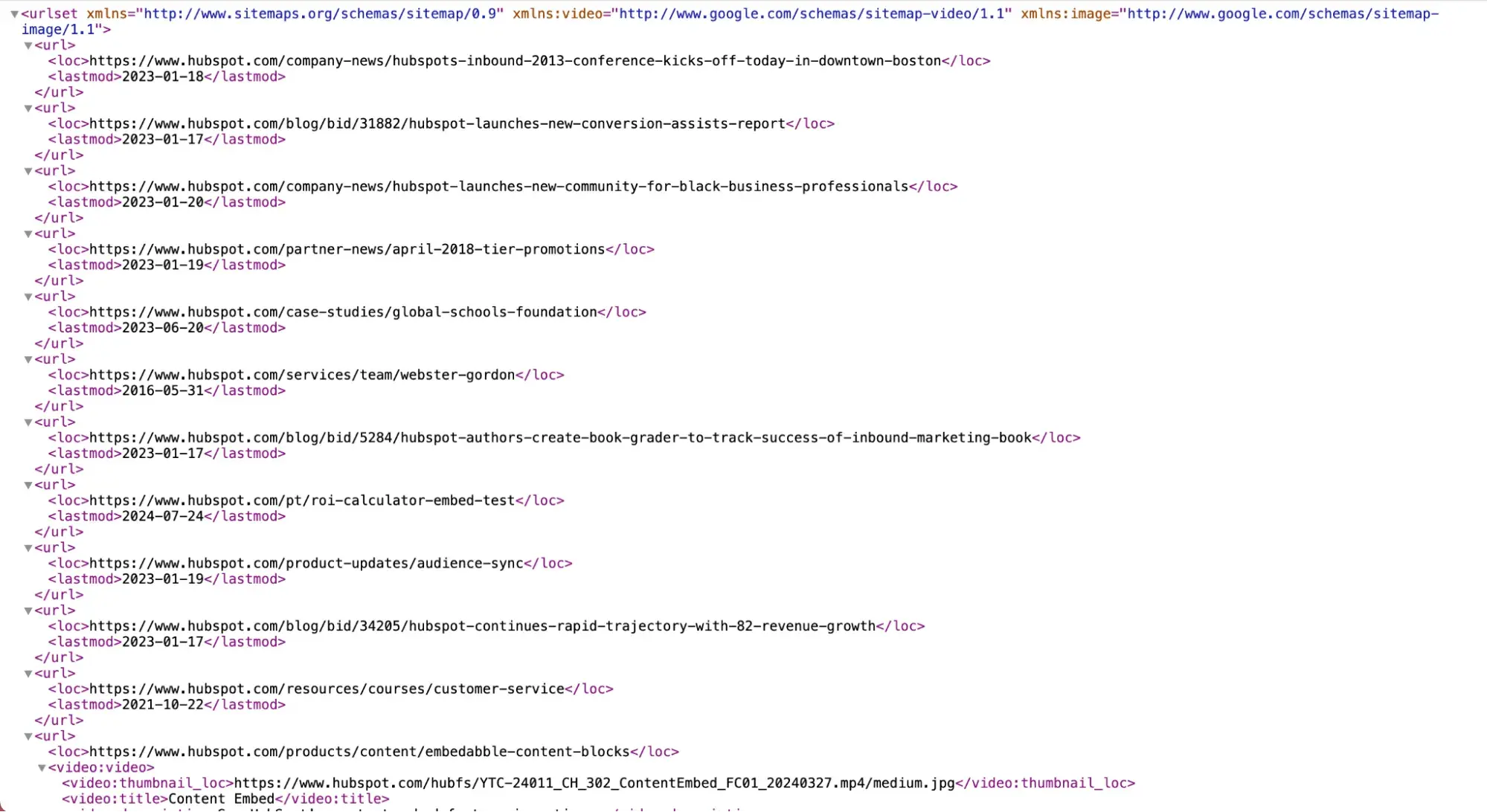
Pro tip: You can find the XML sitemap of almost any website easily. I always try these standard sitemap slugs when analyzing a site or its competitors: websitename.com/sitemap.xml is the most common. But you can also try some of the following: /sitemap-index.xml, /sitemap.txt, /sitemap/, /sitemap/index.xml or /sitemap.php.
Developers can create XML sitemaps from scratch, so long as they have a full list of URLs and good context on all your site content and structure. Otherwise, there are lots of free tools and plugins that automatically create XML sitemaps for you.
If I’m working on a WordPress website, I like to use the Yoast SEO plugin for a quick and easy solution.
The Difference Between XML & HTML Sitemaps
Both XML and HTML sitemaps are designed to make your content and site structure easier to find and digest. The difference between XML and HTML sitemaps is who (or what) accesses and uses them.
XML sitemaps are purely for search engines. HTML sitemaps were also recommended for search engine optimization (SEO) purposes. But these days, they’re only used by human website visitors.
The second difference is the format. It’s in the names, but both types of sitemaps are created in different formats. XML is written in Extensible Markup Language, a language that search engines can read, whereas HTML files are generally text files with hyperlinked text.
Here’s what XML language looks like on the sitemap I found for Coca-Cola’s website:

In comparison, here’s how the site’s HTML sitemap looks:
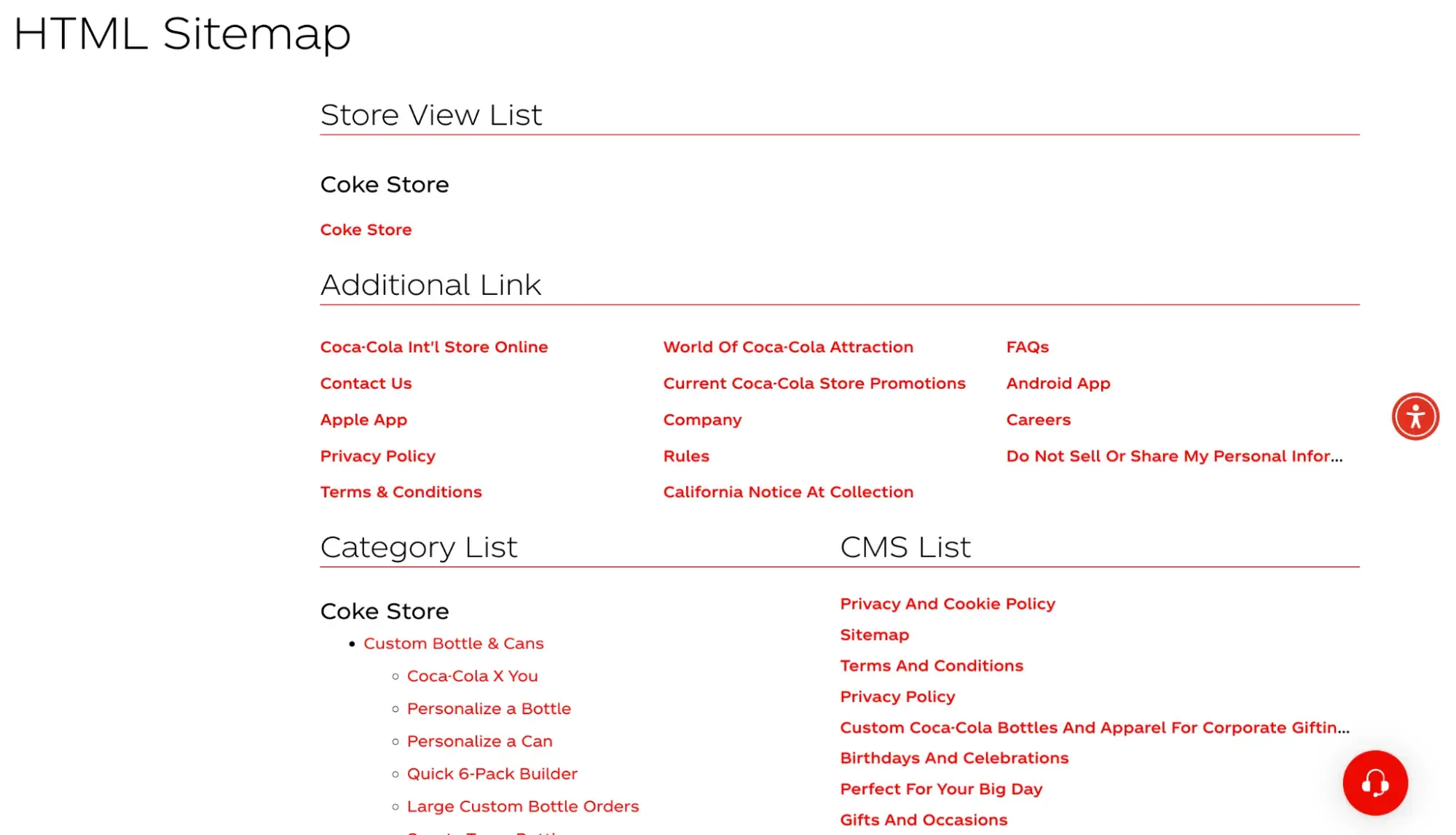
Another difference is the content of the sitemaps. Both contain the links to all pages and subpages on your site, but XML sitemaps can also contain information about when the URL was last updated, how frequently it’s updated, and how important a URL is relative to other pages.
The two sitemaps are also stored differently. XML sitemaps are files you store in the root directory. Search engines know how to find them there. But HTML sitemaps are for humans, so I often link them in the footer of a website.
Need some help with XML sitemaps and other SEO questions? Download the free SEO starter pack here!
Benefits of HTML Sitemaps
I’ve heard a lot of people (including SEO practitioners) dismiss the notion of an HTML sitemap being beneficial for SEO. Even keeping a high-level version of it in a website footer is considered old fashioned among some circles.
But I’ll always recommend it. I still regularly find myself scrolling to a website’s footer to find what I need, like a contact page, for example. It’s incredibly frustrating to find an empty footer in that situation. While there’s no technical SEO benefit to HTML sitemaps these days, they’re good for user experience. And, a good user experience is absolutely good for SEO.
Also, you need to be extremely confident in your website navigation structure to dispense with an HTML sitemap. Most of the websites I work on have navigation challenges that need to be resolved.
So, why deny your website visitors an opportunity to discover more content on your site?
For example, I took a look at the Microsoft website’s navigation and sitemaps. Microsoft provides a fairly minimal website menu when you consider how many products and services they provide. The menu consists of single items that cover a few broad products with no dropdowns for subcategories or individual pages. There’s no way a user could find all their website pages just from the navigation like this:
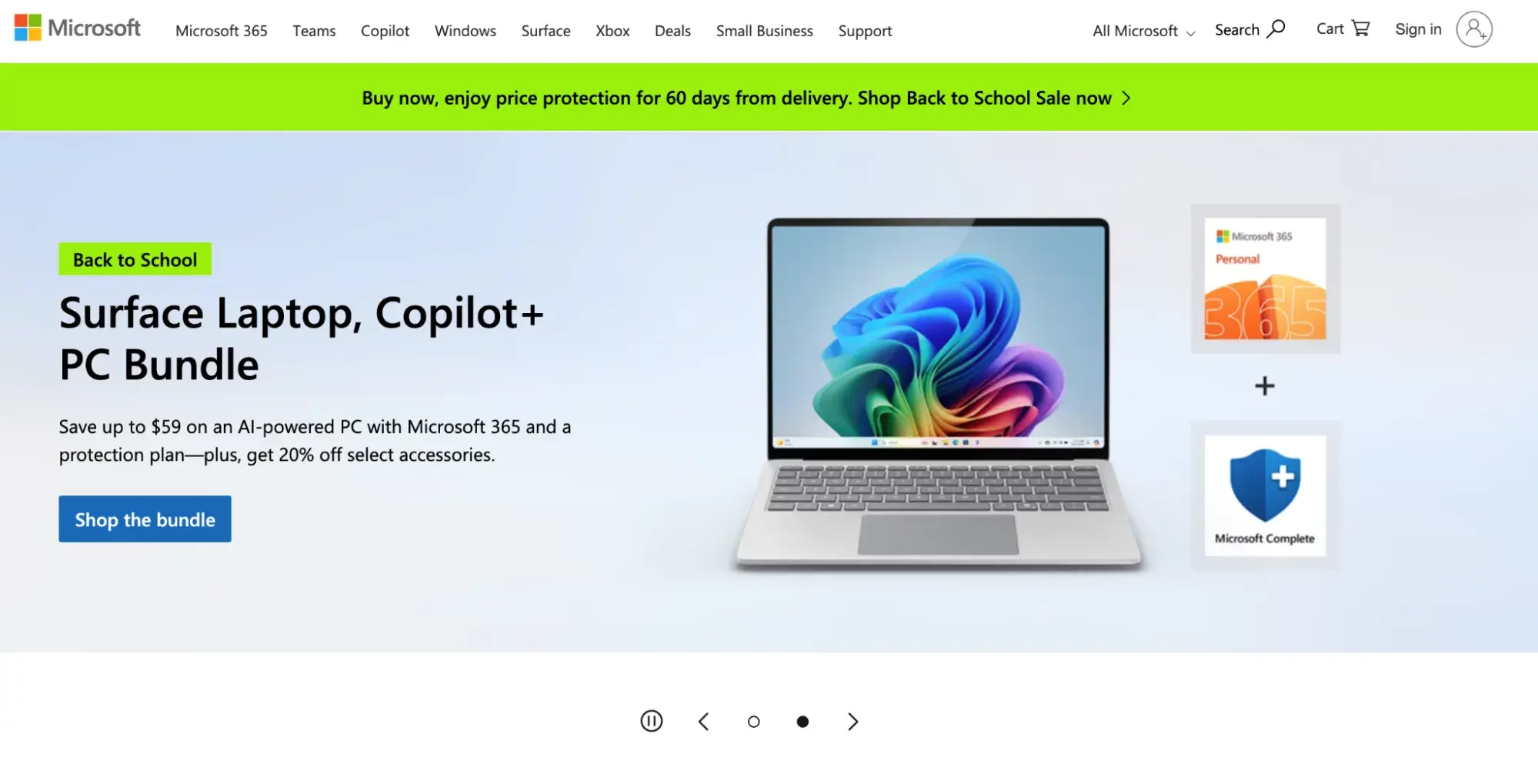
Instead, they provide a search functionality but also an HTML sitemap that gives users a comprehensive library of links to all the content on the site:
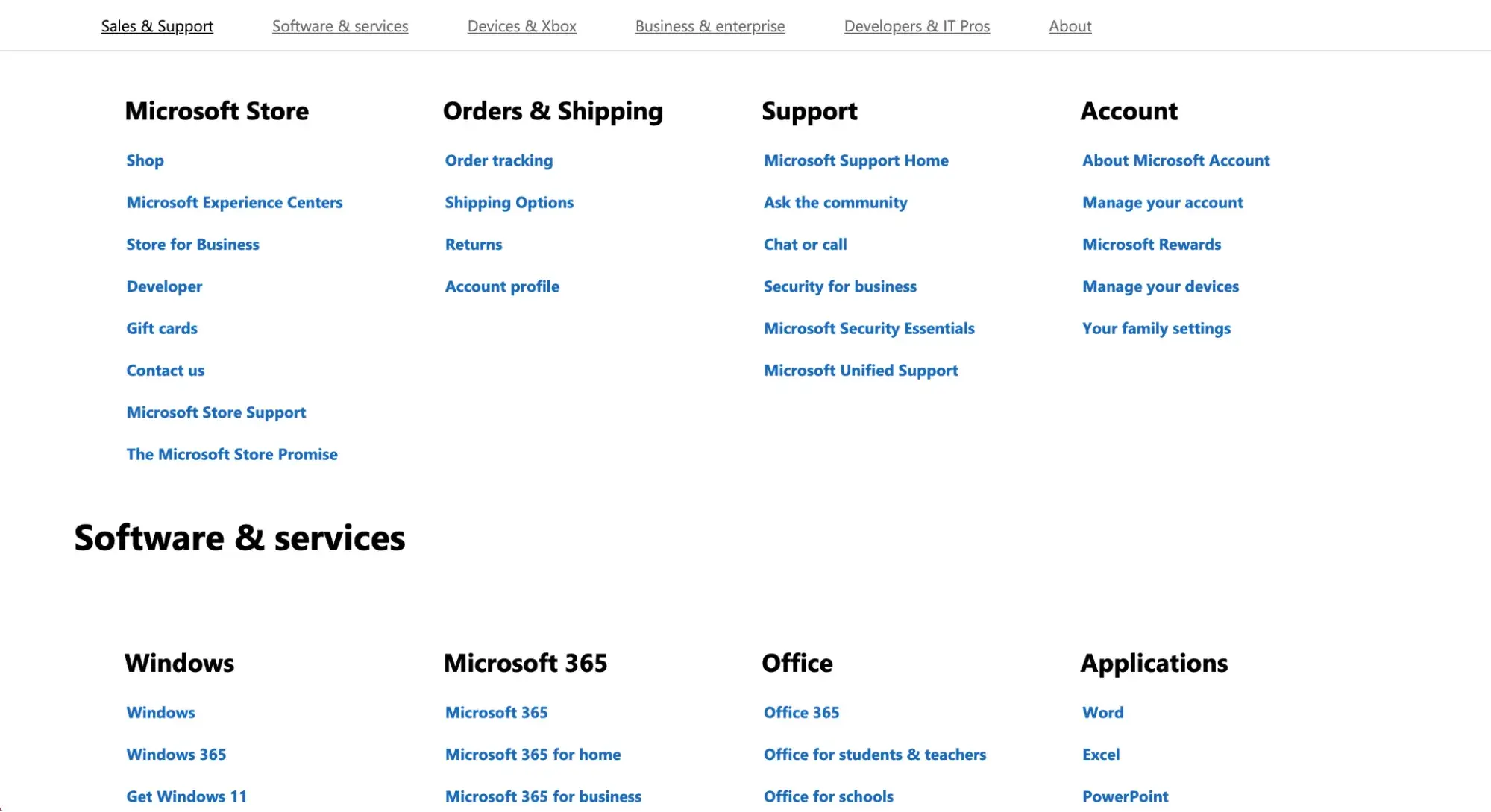
Pro tip: I think it’s worth noting that HTML sitemaps can also make it far easier for people with accessibility needs, like those who use screen readers, to navigate your site. So, I recommend including an HTML sitemap as part of any accessibility update projects you’re working on, as well as more general UX updates.
One situation where I will always recommend an HTML sitemap is a large website, like an eCommerce or news website. People are likely coming to your site with a specific category or item in mind. While your navigation should take care of that for them, an HTML sitemap can be preferable for some people and it’s an easy item to create and make available.
eBay’s HTML sitemap is a good example:
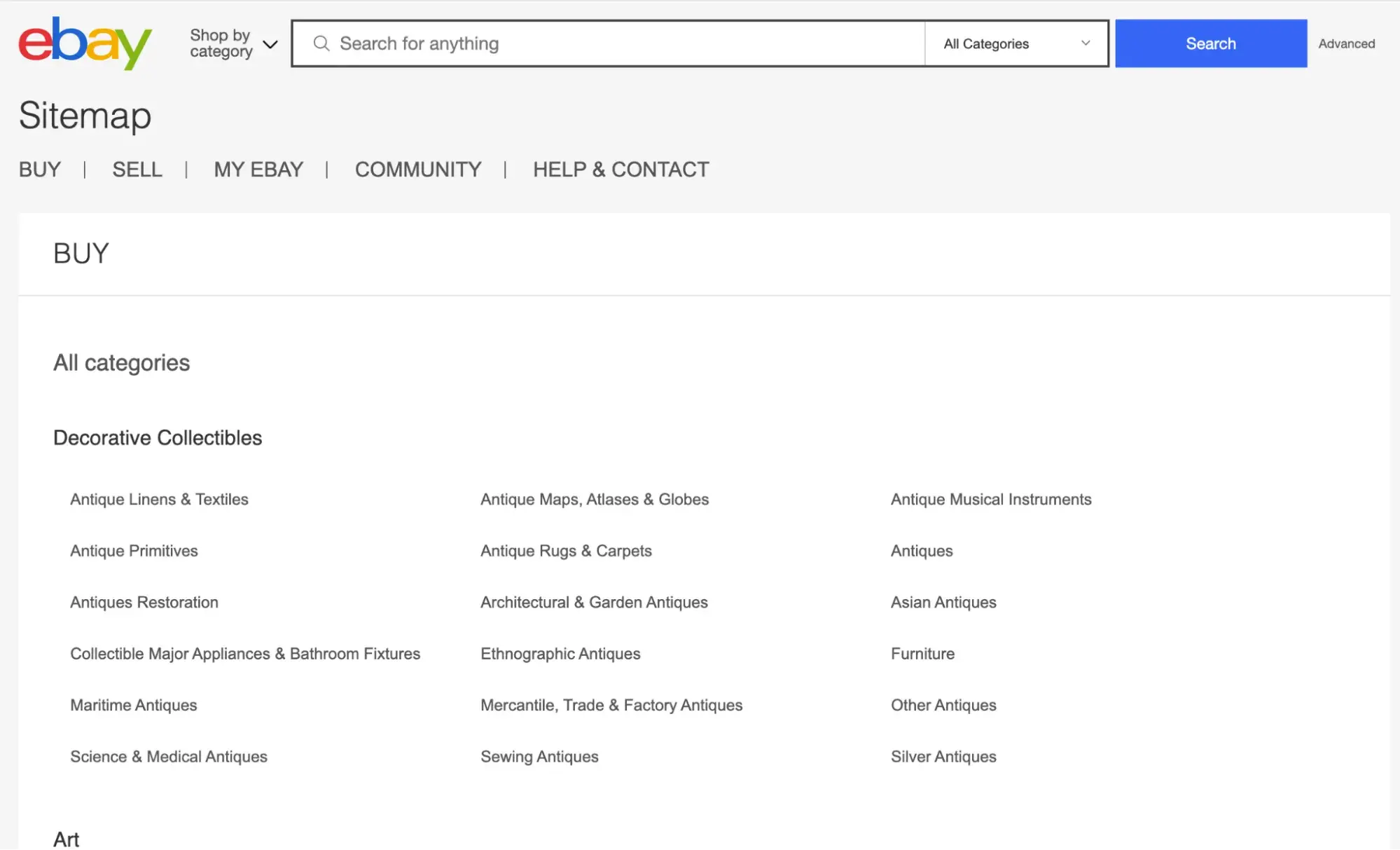
Benefits of XML Sitemaps
The benefits of XML sitemaps relate purely to SEO. But I’m often asked why that is and how they work. So, let’s dig into some of the reasons XML sitemaps are good for SEO.
Firstly, they make all your important content findable for search engines. Bots might miss some of your pages during a regular crawl. However, submitting a sitemap to Google via Google Search Console ensures that the search engine is aware of all the content you want it to see and index.
In this way, XML sitemaps improve the discoverability of your pages and the overall rankings of your site in search results.
Here’s how your sitemap(s) look once submitted to Google Search Console for crawling:
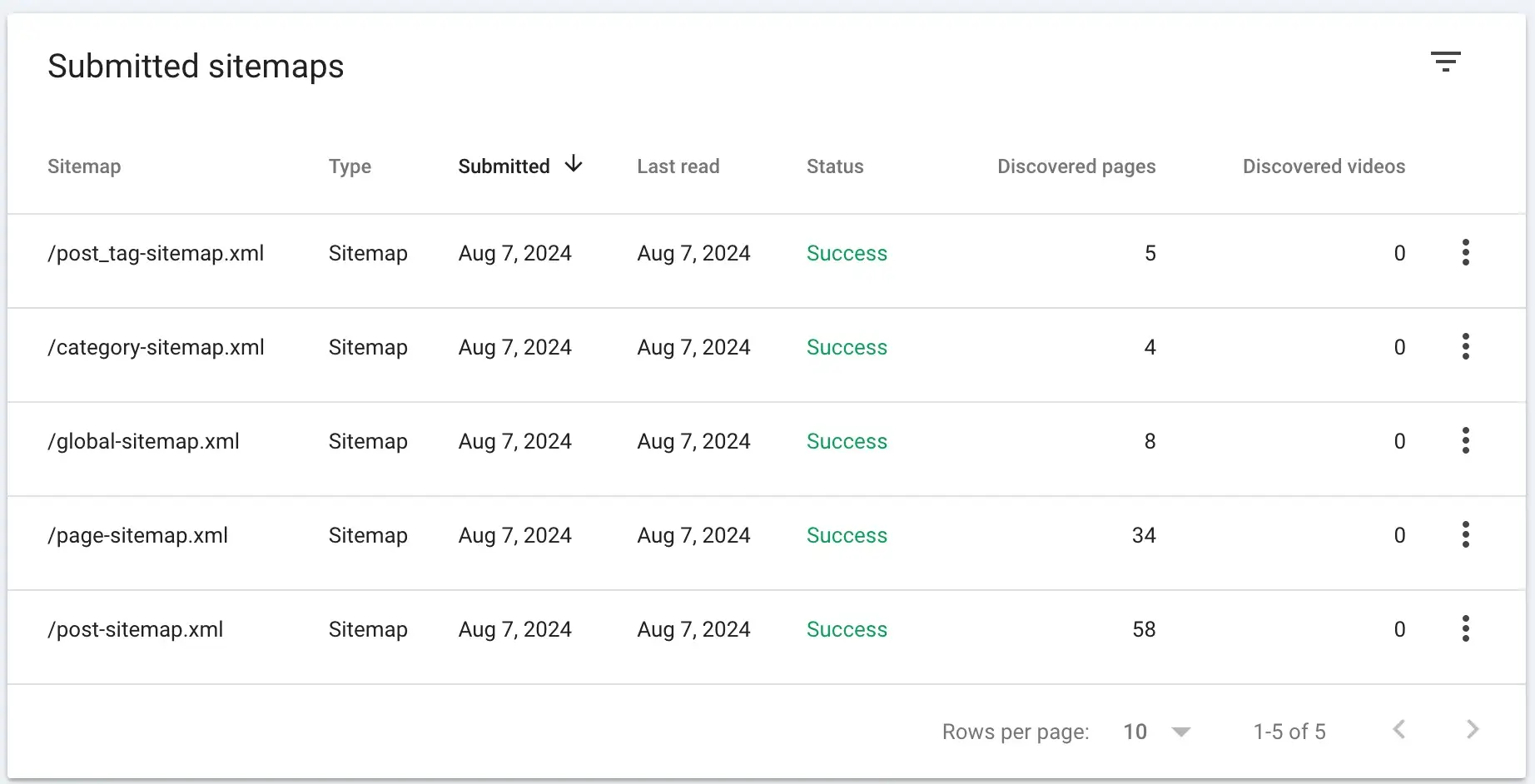
The same holds true for updates to your content. Content updates are one of my core recommendations for SEO, especially for sites that haven’t been updated in a while, leading to reduced rankings and traffic. An XML sitemap also means search engines find updates to your content quicker, speeding up the impact of any SEO optimizations.
The same holds true for other metadata included in your XML file. Update frequency and priority level of each page provides search engines with a lot more context about the site’s architecture and content. The better search engines understand your website, the more likely they are to index and rank it.
One thing that also comes into play is search rankings for different content types, not just pages. XML sitemaps also contain information about media, images and news. So, for example, it makes any video content on your site more rankable in video search results.
There is no scenario where I would not recommend producing an XML sitemap for an SEO project, but there are some sites that benefit more than others.
For example, I frequently work with multi-language websites. Multinational companies need websites that cater to different languages when their customers come from all around the world.
Since Google indexes different search results in different countries according to this (and sometimes some other factors, like browser language settings), it’s important that you make the language structure of your site clear for search engines, too.
You can do this using XML sitemaps because they support Hreflang tags (HTML attributes indicating the language of a page), enabling search engines to identify and differentiate between different language versions of a page more easily.
Here’s how the XML might look in this instance, showing different versions of the homepage in English (en), French (fr), and Spanish (es):
See the Pen xml sitemap example by HubSpot (@hubspot) on CodePen.
Determining Which to Use
It’s not really a matter of choosing between an HTML sitemap and an XML sitemap. Both serve different purposes and different “users” — humans and search engines.
In an ideal world, I would recommend you implement both.
However, I would ultimately prioritize an XML sitemap if it were a choice between the two. Provided you have decent website navigation, a human doesn’t strictly need an HTML sitemap. But the SEO benefits of producing an XML sitemap are too potent to be ignored.
If you really need some points of analysis to make a decision, take a look at UX indicators against your SEO performance. If your UX needs serious work (especially if some pages or categories are not being discovered by users) and your SEO performance is optimal, I would focus on an HTML site. But if your website is in pretty good shape and it’s your organic traffic that’s the problem, then an XML sitemap should be top of your list as part of a wider SEO project.
Should you use an HTML or XML Sitemap — or both?
The term “sitemap” is a bit of a catch-all. As I’ve outlined above, HTML and XML sitemaps actually serve very different purposes and come in very different formats. Their overall purpose is the same, however: provide a comprehensive map of the pages and content on your site to make all of it more discoverable.
There’s no doubt that XML sitemaps are a core component of good technical SEO. But I don’t think the HTML sitemap should be written off like it sometimes is these days. Ultimately, I recommend implementing both so your content can be accessed and understood fully by humans and search engines alike.
Website Design










![Creating a Web Design Contract That Keeps Your Project on Track [+ Expert Tips]](https://53.fs1.hubspotusercontent-na1.net/hubfs/53/web-design-contract-1-20250312-1603286.webp)

![The Podcaster's Guide to Embedding Your Show on Your Website [+Step-by-Step Tutorial]](https://53.fs1.hubspotusercontent-na1.net/hubfs/53/embed-podcast-on-website-1-20250226-2656001.webp)